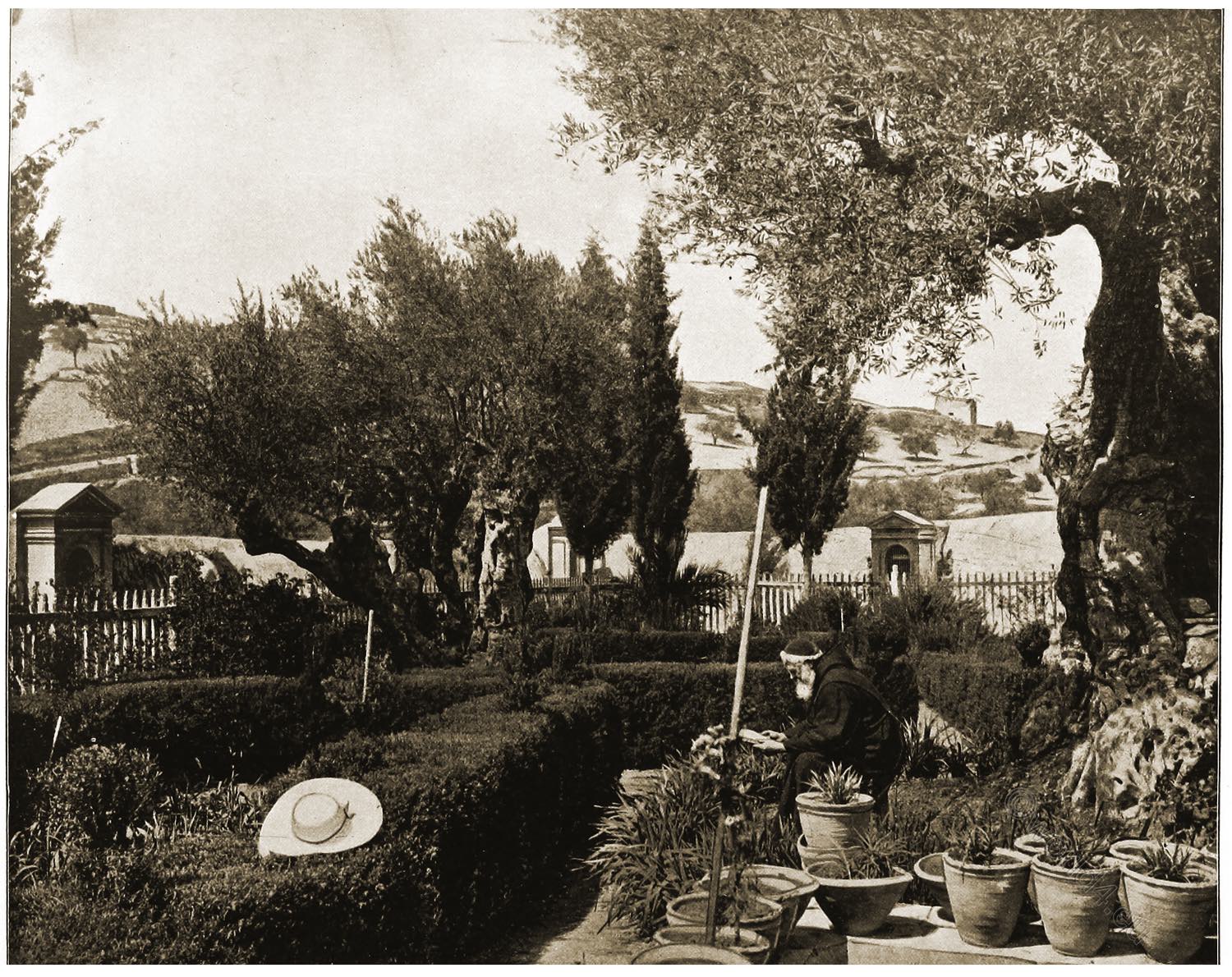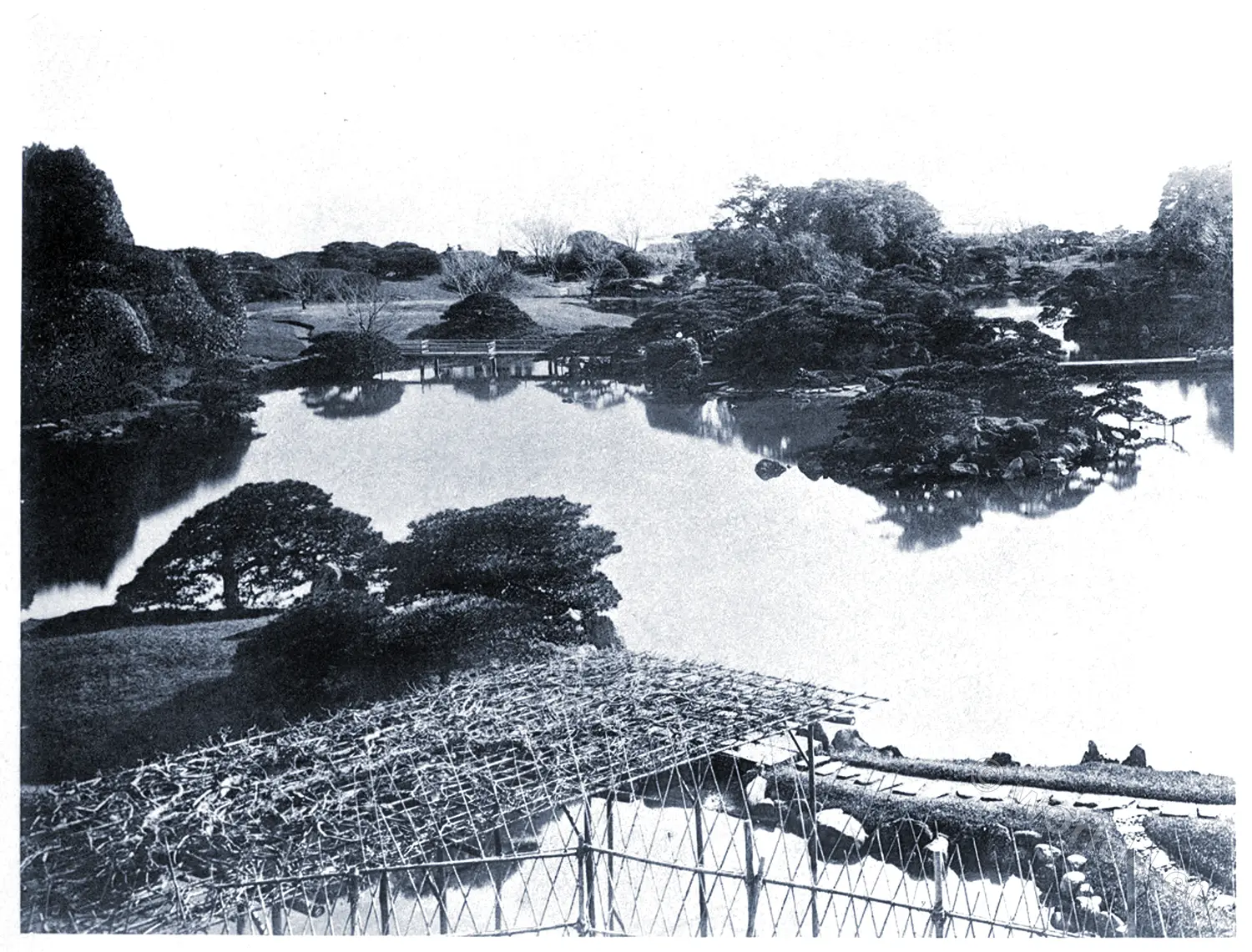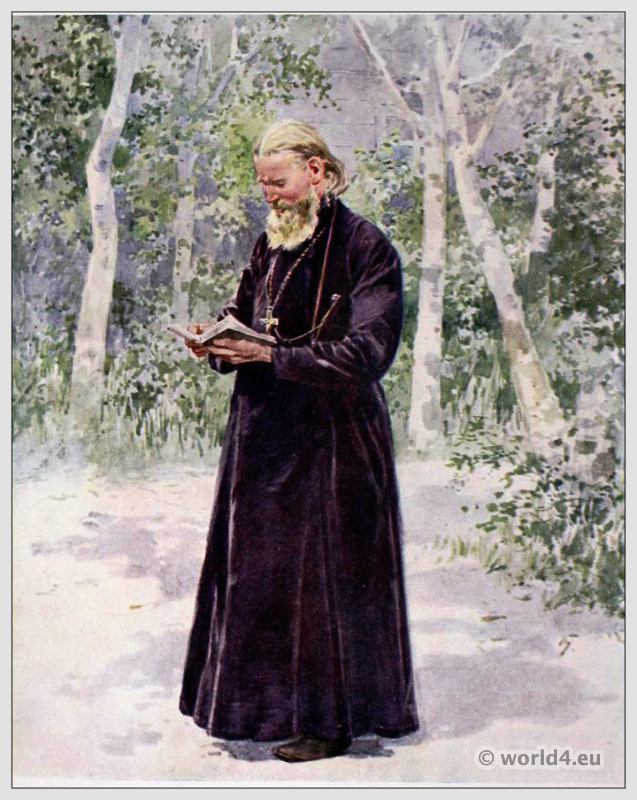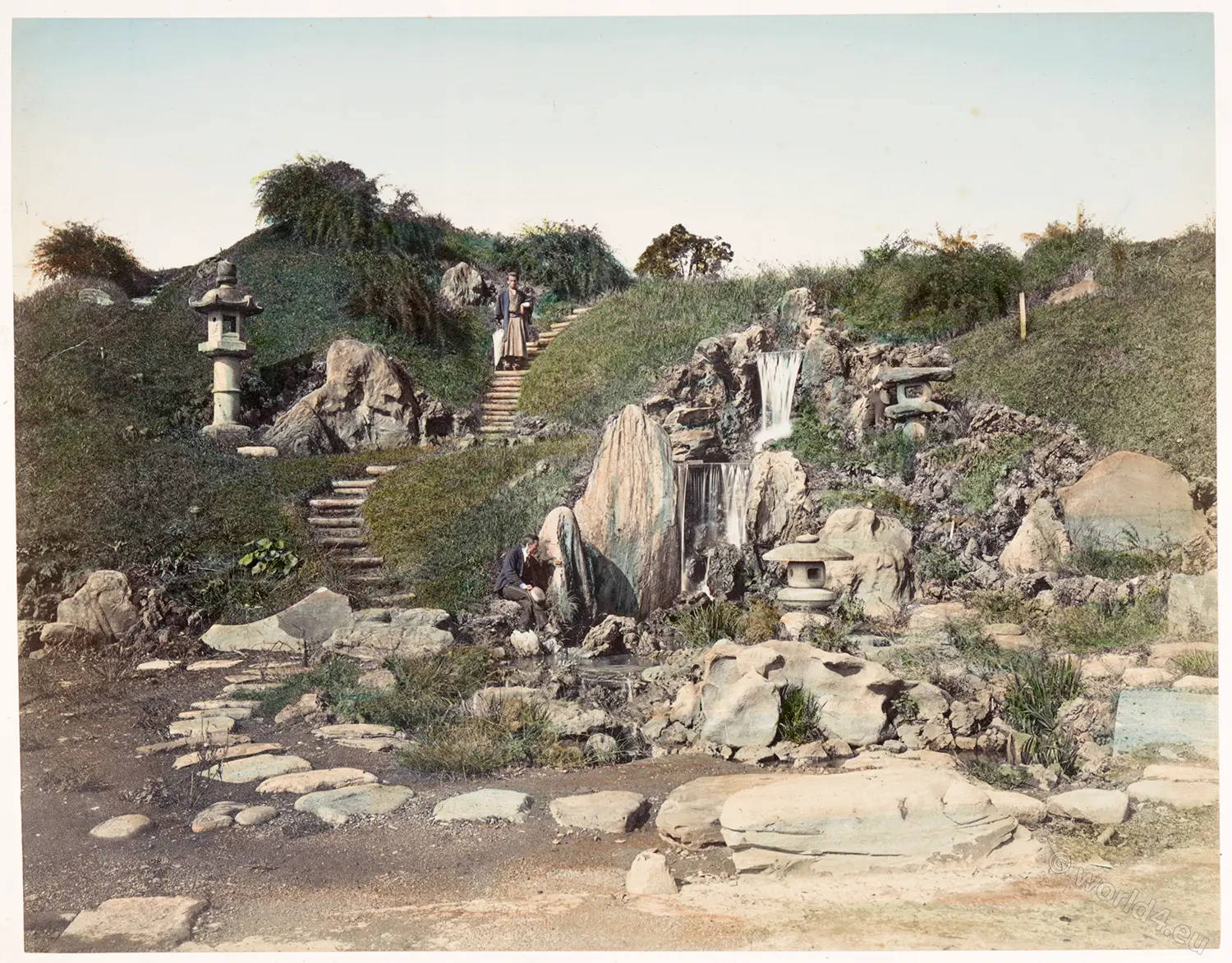
The Ogiya (扇屋) chaya (tea house) and garden at Oji (王子), Tokyo. Attributed to Seibei Kajima. c1880.
PLATE XXX.
TEA-HOUSE GARDENS, OJI
by Josiah Conder.
The suburban tea-houses of the capital posess, in many cases, attractive gardens.
At Meguro, a village to the south-west of Tokio, several very good examples may be seen, which are specially visited when the poeonies are in blossom.
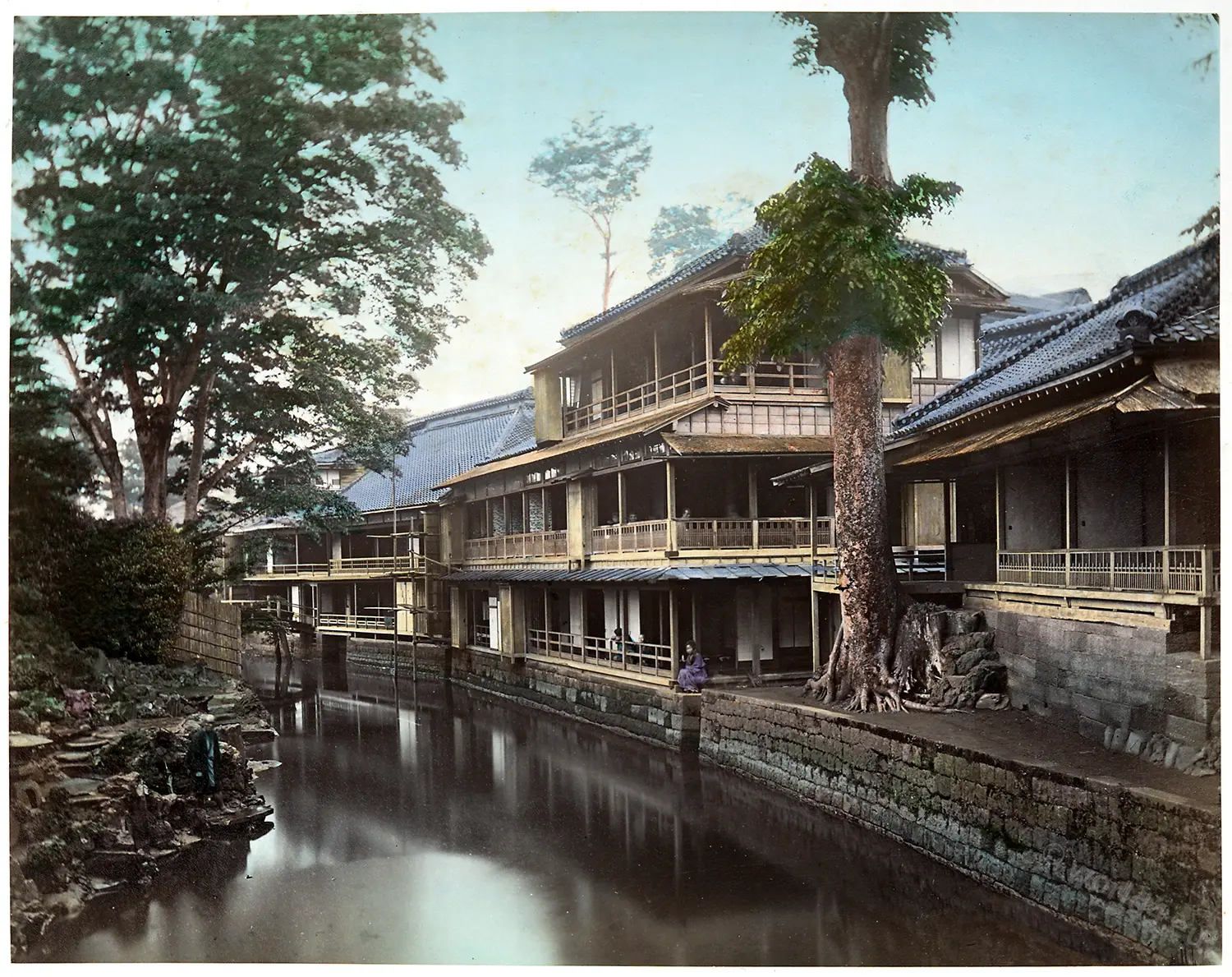
The Ogi-ya and Ebi-ya, two tea-houses situated on the banks of the Taki-no-gawa, a stream running through the suburb of Oji, are much frequented in the spring and autumn.
In Japan, buildings for recreation and amusement are by preference placed close to running water, and in many cases are constructed so as actually to overhang a stream, the fondness for water being carried so far that sometimes unhealthy creeks are built over in this manner.
The narrow and rapid stream at Oji, shown in Plate XXX., is crossed from the tea-houses by light wooden bridges, and on the opposite bank a strip of land has been laid out as a Hill-garden, in the characteristic native style.
Rounded bushes, quaintly trimmed pine-trees, and other evergreens, in addition to rocks, lanterns, and rugged stone steps, combine to produce a very picturesque effect.
Source:
- Supplement to Landscape gardening in Japan by Josiah Conder (1852-1920); Kengo Ogawa. Tokio: Kelly and Walsh, 1893.
- JAPAN. Described and Illustrated by the Japanese. Written by Eminent Japanese Authorities and Scholars. Edited by Francis Brinkley (1841 – 1912) of Tokyo Japan. With an Essay on Japanese Art by Kakuzo Okakura (1860 – 1929) Director of the Imperial Art School at Tokyo Japan. 1897.
Discover more from World4 Costume Culture History
Subscribe to get the latest posts sent to your email.



